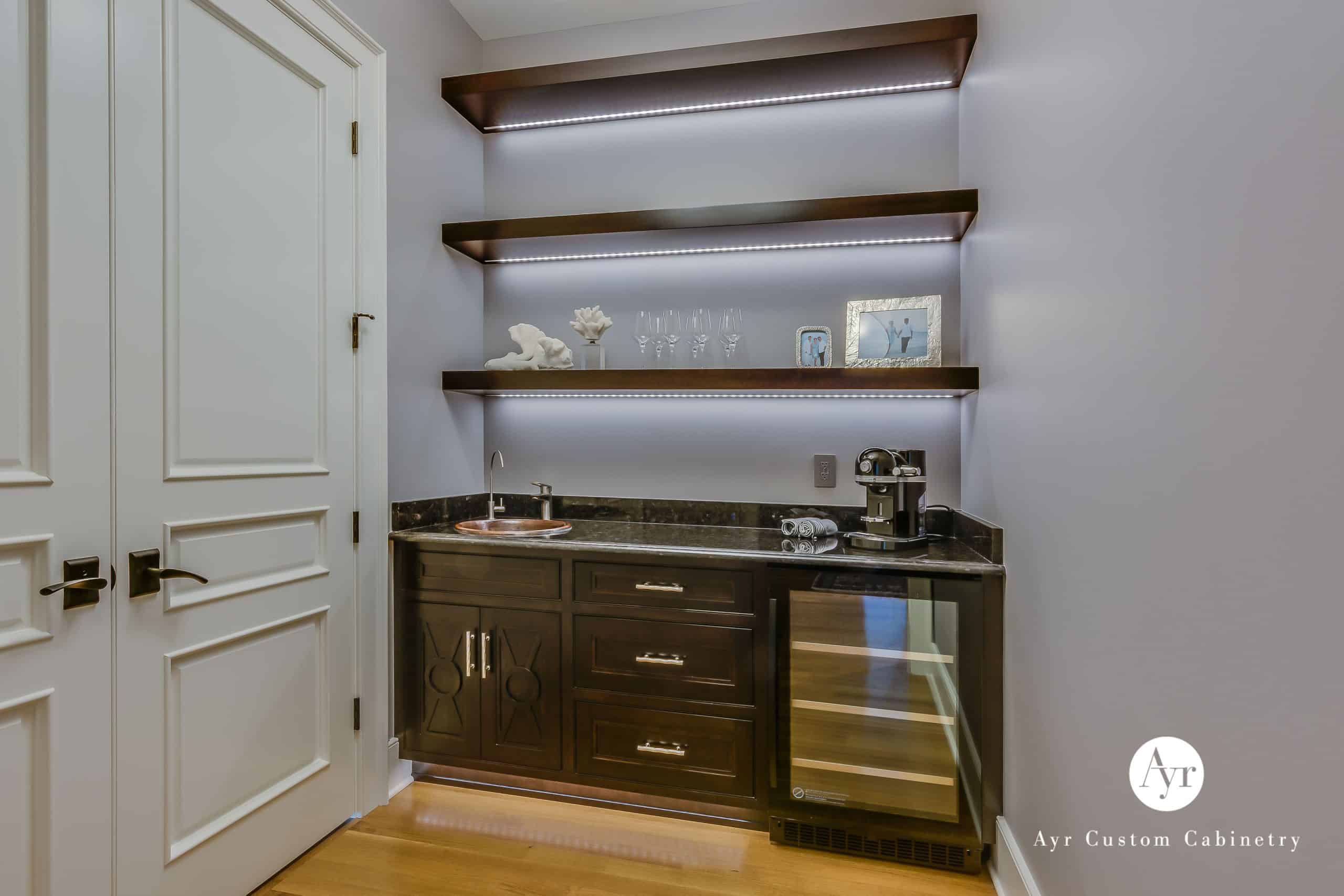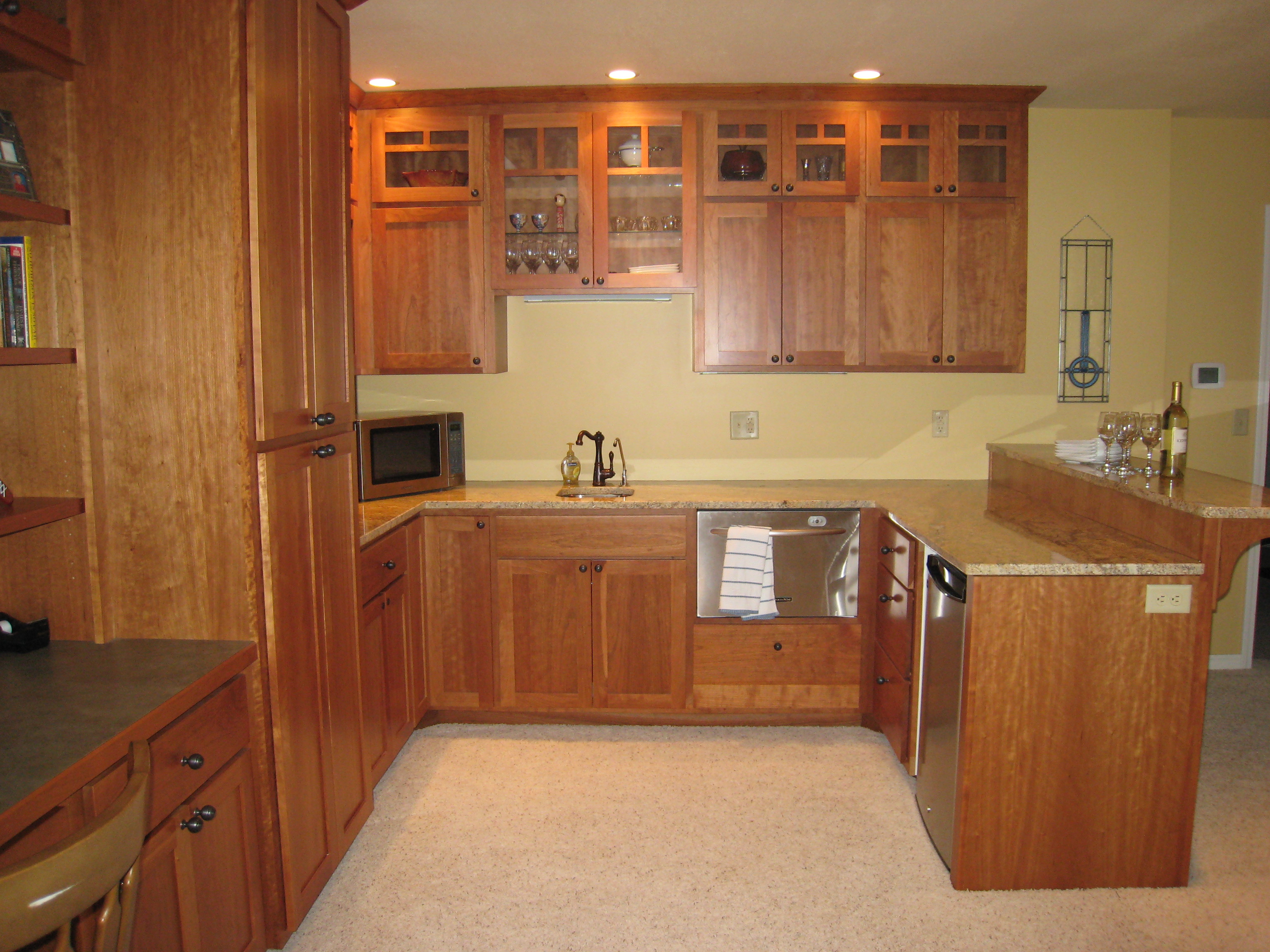Standard Wet Bar Cabinet Depths & Their Applications

Choosing the right depth for your wet bar cabinet is crucial for both functionality and aesthetics. The depth directly impacts the types of appliances you can fit, the amount of storage available, and the overall feel of your bar area. A poorly chosen depth can lead to a cramped and inefficient space, while a well-chosen depth maximizes both storage and usability.
Wet Bar Cabinet Depth Comparison
The depth of your wet bar cabinet significantly influences its practicality. Below is a comparison of common depths and their suitability for various bar setups.
| Cabinet Depth | Suitable for | Advantages | Disadvantages |
|---|---|---|---|
| 12 inches | Small apartment bars, limited space areas | Space-saving, ideal for small spaces, cost-effective. | Limited appliance and storage options, may require careful planning. |
| 18 inches | Medium-sized home bars, apartments with more space | Allows for a wider range of appliances and storage, good balance between space and functionality. | May feel cramped in very large spaces, requires careful appliance selection to avoid overcrowding. |
| 24 inches | Large home bars, spacious areas | Ample space for appliances, extensive storage, allows for comfortable workflow. | Requires significant space, can be more expensive, may feel overwhelming in smaller areas. |
Advantages and Disadvantages of Different Depths
The choice between 12″, 18″, and 24″ wet bar cabinets hinges on your available space and desired functionality. A shallower cabinet (12″) is ideal for maximizing space in small areas, but compromises on storage and appliance options. Conversely, a deeper cabinet (24″) offers ample space but requires a larger footprint. An 18″ cabinet provides a balanced approach, suitable for many setups.
Example: 18-Inch Deep Wet Bar Design, Wet bar cabinet depth
Imagine a sleek, modern wet bar featuring an 18-inch deep cabinet. The cabinet is crafted from dark walnut wood with brushed nickel hardware, exuding a sophisticated ambiance. The countertop is a polished concrete, providing a durable and stylish surface.
The layout is optimized for functionality. On one side, a compact under-counter refrigerator sits nestled within the cabinet, its stainless steel finish complementing the wood. Above the refrigerator, open shelving displays glassware and bar accessories. The other side features a dedicated space for a built-in ice maker, seamlessly integrated into the cabinet design. Below the ice maker, ample drawer space is available for storing bar tools and supplies. The countertop extends slightly beyond the cabinet, providing ample space for mixing drinks and serving guests. The overall design is clean and efficient, maximizing space and usability within the 18-inch depth.
Customizing Wet Bar Cabinet Depth Based on Space and Needs

Designing a wet bar is all about maximizing functionality within your available space. Whether you envision a sleek, minimalist setup or a fully-fledged cocktail haven, the depth of your bar cabinets plays a crucial role in achieving your desired aesthetic and usability. Getting the depth right ensures everything fits comfortably and is easily accessible, transforming your wet bar from a cramped afterthought into a stylish and functional centerpiece.
Choosing the perfect depth for your wet bar cabinets requires careful consideration of both the space you have and how you intend to use the bar. A compact bar for occasional use will have different needs than a full-fledged home bar designed for entertaining. Understanding these needs is the first step towards designing a truly customized wet bar.
Determining Optimal Wet Bar Cabinet Depth
Optimal cabinet depth depends heavily on your available space and the intended use of the wet bar. A smaller space might necessitate a shallower cabinet, while a larger area allows for a deeper one, accommodating more items and features. For example, a wet bar primarily used for storing drinks might only require a cabinet depth of 12 inches, while a full bar with a mixing area and appliances may need a depth of 24 inches or more. Consider the size and number of items you’ll be storing – wine bottles, glassware, mixers, ice buckets, cocktail shakers – to estimate the necessary depth.
Step-by-Step Guide for Measuring Space and Planning Custom Wet Bar Cabinet Depth
Before you even think about ordering cabinets, accurate measurements are key. This step-by-step guide will help you navigate the process:
- Measure the available space: Accurately measure the width, height, and depth of the area designated for your wet bar. Account for any obstructions like pipes or electrical outlets. Consider leaving at least a few inches of clearance around the cabinets for ease of access and maintenance. For instance, if your wall is 10 feet wide, you might allocate 8 feet for the bar, leaving 1 foot on either side for walking space.
- Determine the cabinet layout: Sketch a basic layout of your wet bar, including the location of the sink, refrigerator (if applicable), and other appliances. This helps visualize how much space each cabinet will need. For example, a double-sink setup would require a deeper cabinet than a single-basin sink.
- Plan cabinet depths: Based on your layout and the items you plan to store, determine the appropriate depth for each cabinet. Consider using a combination of depths if necessary – for instance, a shallower cabinet for glassware and a deeper one for larger bottles. Remember to account for the thickness of cabinet doors and drawers.
- Plumbing and electrical access: Identify the locations of plumbing and electrical outlets. Ensure your cabinet design provides sufficient access for repairs and maintenance. This might involve adding extra space behind cabinets for pipes or creating access panels for electrical work. A poorly planned layout could mean inconvenient access to plumbing repairs in the future.
- Cabinet construction and installation: Consult with a professional cabinet maker or installer to finalize your design and ensure it is structurally sound and meets all building codes. They can offer valuable insights into material selection, functionality, and installation techniques.
Shallow vs. Deep Wet Bar Cabinet Design Implications
A shallow wet bar cabinet (12-18 inches deep) offers a sleek, space-saving solution, ideal for smaller spaces or bars primarily used for drink storage. However, accessibility might be compromised, especially for larger bottles or items.
Conversely, a deep wet bar cabinet (24 inches or more) provides ample storage and work surface area, perfect for a full-fledged bar with a mixing area and appliances. However, this design requires more space and may feel overwhelming in smaller rooms. Consider the trade-offs between storage capacity and overall space utilization. A deeper cabinet can create a more immersive bar experience but requires careful planning to avoid feeling cluttered. For example, if you plan on using a blender and a coffee maker, you will need a deeper cabinet than one only used to store bottles.
Impact of Wet Bar Cabinet Depth on Overall Bar Design

The depth of your wet bar cabinets significantly influences both the aesthetics and functionality of your entire bar area. A poorly chosen depth can lead to a cramped, inefficient space, while a well-considered depth enhances both the look and the usability of your bar. Getting this right is crucial for creating a bar that’s both stylish and a pleasure to use.
A wet bar’s depth directly impacts the flow of the space and the overall user experience. Imagine a deep cabinet that encroaches on the bar’s usable counter space, making it difficult to prepare drinks or comfortably serve guests. Conversely, a shallow cabinet might lack sufficient storage, leaving you constantly shuffling items around. The interplay between cabinet depth and other design elements is key to a successful wet bar.
Wet Bar Cabinet Depth and Aesthetic Considerations
Cabinet depth is inextricably linked to the overall aesthetic of the bar area. A shallow cabinet in a small space can make the area feel more open and less cluttered, creating a sense of spaciousness. This is ideal for smaller bars or those with limited space. A deeper cabinet, on the other hand, can provide ample storage, but in a smaller room might feel overwhelming and visually heavy. In a large space, a deeper cabinet might blend seamlessly into the design, offering generous storage without impacting the overall spaciousness. Consider the overall style of your bar—a sleek, modern bar might benefit from shallower, minimalist cabinets, while a more traditional design might suit deeper cabinets with more ornate detailing.
Examples of Bar Designs with Varying Cabinet Depths
Consider a small, contemporary wet bar designed for an apartment. A 12-inch deep cabinet, flush with the countertop, provides sufficient storage for essentials like glasses and liquor bottles without sacrificing precious counter space. This creates a clean, uncluttered look that maximizes functionality in a limited space. The shallow depth contributes to the modern, minimalist aesthetic. In contrast, imagine a large, luxurious wet bar in a spacious home. A 24-inch deep cabinet allows for more extensive storage, potentially incorporating features like a built-in ice maker or wine cooler. The deeper cabinet can accommodate larger appliances and supplies without overwhelming the space. The deeper depth allows for more complex and elaborate storage solutions, complementing the overall luxury feel.
Design Considerations When Choosing Wet Bar Cabinet Depth
Choosing the right wet bar cabinet depth requires careful consideration of several factors. Getting these elements right ensures a functional and aesthetically pleasing bar area.
- Traffic Flow: Ensure sufficient space for movement around the bar area. Deep cabinets can restrict movement, particularly in smaller spaces.
- Lighting: Deep cabinets can create shadows and reduce visibility inside. Plan for adequate lighting to illuminate the cabinet’s interior.
- Countertop Materials: The overhang of the countertop needs to be considered in relation to the cabinet depth. A deep cabinet might require a wider countertop overhang to provide enough space for comfortable use.
- Appliance Integration: If you plan to incorporate appliances like a refrigerator or ice maker, you’ll need a cabinet depth that accommodates them comfortably.
- Storage Needs: Assess your storage requirements realistically. A deeper cabinet offers more storage, but only if you need it. A shallow cabinet might suffice if you have minimal storage needs.
